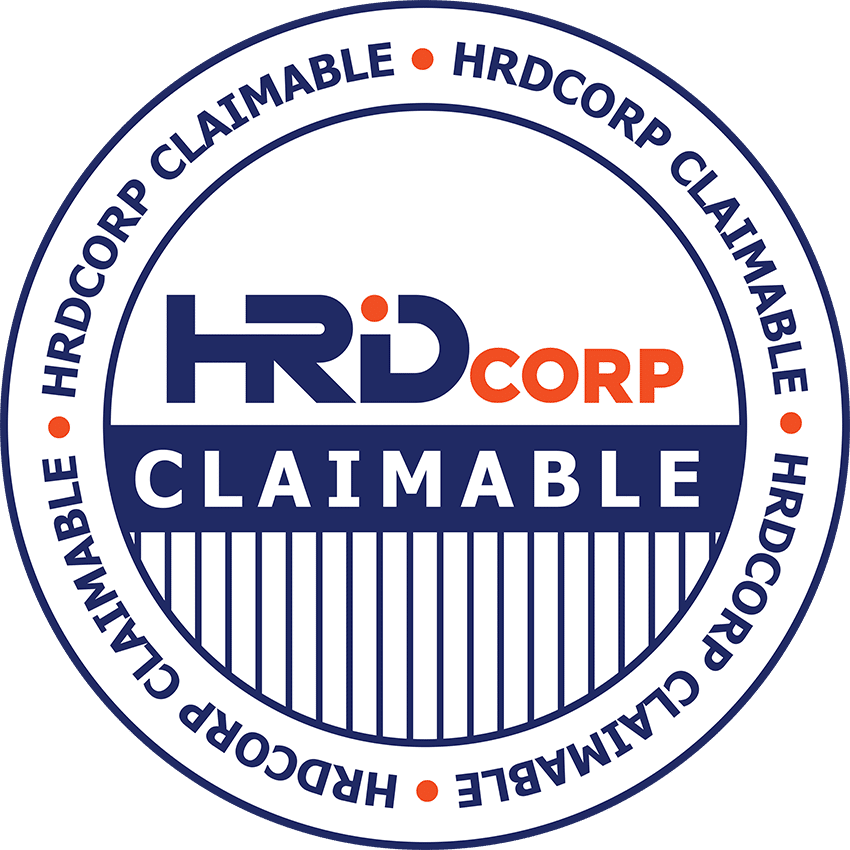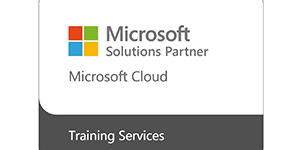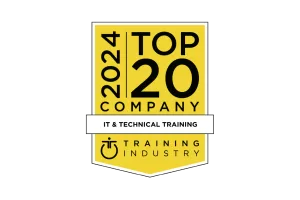Overview
Unlock opportunities with Azure Cosmos DB.
This DP-420T00: Designing and Implementing Cloud-Native Applications Using Microsoft Azure Cosmos DB course teaches developers how to create application using the SQL API and SDK for Azure Cosmos DB. Students will learn how to write efficient queries, create indexing policies, manage and provisioned resources, and perform common operations with the SDK.
Skills Covered
- Create and configure Azure Cosmos DB SQL API account, database, and container
- Use the .NET SDK to manage resources and perform operations
- Perform queries of varying complexity
- Design a data modeling and partitioning strategy
- Optimize queries and indexes based on characteristics of an application
- Use the Azure Resource Manager to manage accounts and resources with CLI or JSON and Bicep templates
Who Should Attend
Software engineers tasked with authoring cloud-native solutions that leverage Azure Cosmos DB SQL API and its various SDKs. They are familiar with C#, Python, Java, or JavaScript. They also have experience writing code that interacts with a SQL or NoSQL database platform.
Course Curriculum
Prerequisites
Before attending this course, students must have:
- Knowledge of Microsoft Azure and ability to navigate the Azure portal (AZ-900 equivalent)
- Experience writing in an Azure-supported language at the intermediate level. (C#, JavaScript, Python, or Java)
- Ability to write code to connect and perform operations on a SQL or NoSQL database product. (SQL Server, Oracle, MongoDB, Cassandra or similar)
Download Course Syllabus
Course Modules
Learn about the Azure Cosmos DB for NoSQL and how to get started with your first account, database, and container.
This learning path helps prepare you for Exam DP-420: Designing and Implementing Cloud-Native Applications Using Microsoft Azure Cosmos DB.
Prerequisites
Before starting this learning path, you should already have:
- Familiarity with Azure and the Azure portal.
- Experience programming with C#. If you have no previous programming experience, we recommend you complete the Take your first steps with C# learning path before starting this one.
Plan for configuration options and provisioning choices with a new Azure Cosmos DB for NoSQL account.
This learning path helps prepare you for Exam DP-420: Designing and Implementing Cloud-Native Applications Using Microsoft Azure Cosmos DB.
Prerequisites
Before starting this learning path, you should have experience of building cloud applications with Microsoft C# or a similar programming language.
Use the Microsoft.Azure.Cosmos library from NuGet to connect to an Azure Cosmos DB for NoSQL account from a .NET application.
This learning path helps prepare you for Exam DP-420: Designing and Implementing Cloud-Native Applications Using Microsoft Azure Cosmos DB.
Prerequisites
Before starting this learning path, you should have experience of building cloud applications with Microsoft C# or a similar programming language.
Use the .NET SDK for Azure Cosmos DB for NoSQL to perform common operations on databases, containers, and items.
This learning path helps prepare you for Exam DP-420: Designing and Implementing Cloud-Native Applications Using Microsoft Azure Cosmos DB.
Prerequisites
Before starting this learning path, you should have experience of building cloud applications with Microsoft C# or a similar programming language.
Create SQL queries for the Azure Cosmos DB for NoSQL using the Data Explorer and the .NET SDK
This learning path helps prepare you for Exam DP-420: Designing and Implementing Cloud-Native Applications Using Microsoft Azure Cosmos DB.
Prerequisites
Before starting this learning path, you should have experience of building cloud applications with Microsoft C# or a similar programming language.
Create custom indexing policies for Azure Cosmos DB for NoSQL containers.
This learning path helps prepare you for Exam DP-420: Designing and Implementing Cloud-Native Applications Using Microsoft Azure Cosmos DB.
Prerequisites
Before starting this learning path, you should have experience of building cloud applications with Microsoft C# or a similar programming language.
Integrate Azure Cosmos DB for NoSQL with Azure Cognitive Search, Azure Functions, and your own solutions.
This learning path helps prepare you for Exam DP-420: Designing and Implementing Cloud-Native Applications Using Microsoft Azure Cosmos DB.
Prerequisites
Before starting this learning path, you should have experience of building cloud applications with Microsoft C# or a similar programming language.
In this learning path, you’ll learn how Azure Cosmos DB uses partitioning to scale containers and how spending some time thinking about your data model helps to meet the performance needs of your applications.
This learning path helps prepare you for Exam DP-420: Designing and Implementing Cloud-Native Applications Using Microsoft Azure Cosmos DB.
Prerequisites
Before starting this learning path, you should already have:
- Familiarity with Azure and the Azure portal.
- Experience programming with C#. If you have no previous programming experience, we recommend you complete the Take your first steps with C# learning path before starting this one.
Plan and implement techniques to replicate data across the globe in Azure Cosmos DB for NoSQL.
This learning path helps prepare you for Exam DP-420: Designing and Implementing Cloud-Native Applications Using Microsoft Azure Cosmos DB.
Prerequisites
Before starting this learning path, you should have experience of building cloud applications with Microsoft C# or a similar programming language.
Optimize the performance of your queries and operations using Azure Cosmos DB for NoSQL.
This learning path helps prepare you for Exam DP-420: Designing and Implementing Cloud-Native Applications Using Microsoft Azure Cosmos DB.
Prerequisites
Before starting this learning path, you should have experience of building cloud applications with Microsoft C# or a similar programming language.
Review the common Cosmos DB administrative tasks of monitor, performance metrics, backup and security used in Azure.
This learning path helps prepare you for Exam DP-420: Designing and Implementing Cloud-Native Applications Using Microsoft Azure Cosmos DB.
Prerequisites
Before starting this learning path, you should have experience of building cloud applications with Microsoft C# or a similar programming language.
Use the command line and Azure Resource Manager to automate common management tasks for Azure Cosmos DB for NoSQL.
This learning path helps prepare you for Exam DP-420: Designing and Implementing Cloud-Native Applications Using Microsoft Azure Cosmos DB.
Prerequisites
Before starting this learning path, you should have experience of building cloud applications with Microsoft C# or a similar programming language.
Use JavaScript to author server-side stored procedures, user-defined functions, and triggers.
This learning path helps prepare you for Exam DP-420: Designing and Implementing Cloud-Native Applications Using Microsoft Azure Cosmos DB.
Prerequisites
Before starting this learning path, you should have experience of building cloud applications with Microsoft C# or a similar programming language.
Request More Information
Training Options
- ILT: Instructor-Led Training
- VILT: Virtual Instructor-Led Training
Exam & Certification
Microsoft Certified: Azure Cosmos DB Developer Specialty
This new certification is a key step for developers who are ready to prove their expertise supporting their organization’s business goals with modern cloud apps. IT environments where application infrastructure is dated, rigorous, and specialized often cost developers valuable time and resources. Business-critical modern apps require scale, speed, and guaranteed availability, and they need to store ever-increasing volumes of data—all while delivering real-time customer access. Developers who work with Azure Cosmos DB find the tools and security they need to meet these requirements and more to meet today’s business challenges.
Training & Certification Guide
Candidates for the Azure Cosmos DB Developer Specialty certification should have subject matter expertise designing, implementing, and monitoring cloud-native applications that store and manage data.
Responsibilities for this role include designing and implementing data models and data distribution, loading data into an Azure Cosmos DB database, and optimizing and maintaining the solution. These professionals integrate the solution with other Azure services. They also design, implement, and monitor solutions that consider security, availability, resilience, and performance requirements.
Candidates for this certification must have solid knowledge and experience developing apps for Azure and working with Azure Cosmos DB database technologies. They should be proficient at developing applications by using the Core (SQL) API and SDKs, writing efficient queries and creating appropriate index policies, provisioning and managing resources in Azure, and creating server-side objects with JavaScript. They should be able to interpret JSON, read C# or Java code, and use PowerShell.
This exam will be available on or around November 30, 2021. This exam measures your ability to accomplish the following technical tasks: design and implement data models; design and implement data distribution; integrate an Azure Cosmos DB solution; optimize an Azure Cosmos DB solution; and maintain an Azure Cosmos DB solution.
Skills measured
- Design and implement data models
- Design and implement data distribution
- Integrate an Azure Cosmos DB solution
- Optimize an Azure Cosmos DB solution
- Maintain an Azure Cosmos DB solution
Azure Strategy & Implementation Guide
Get a step-by-step introduction to using Azure for your cloud infrastructure with this Pack e-book. Read the latest edition of the Azure Strategy and Implementation Guide for detailed guidance on how to create a successful cloud adoption strategy with new innovations, capabilities, and security features from Microsoft Azure.
Microsoft Azure SQL Jumpstart Guide
Find out how to get started launching your first Azure SQL database or find ways to make your existing SQL database work harder. Download the Azure SQL Jumpstart Guide for detailed instructions and in-depth insights to help you make your Azure SQL deployment, migration, or enhancement run smoothly.
Low-code Application Development – Microsoft PowerApps and Azure
Build production-ready apps faster with a low-code environment. Quickly stand up your applications with Power Apps and get more time to apply your technical expertise to extending and optimizing those apps in Azure.
Azure Cloud Native Architecture Mapbook
Grow your cloud architecture skills with guidance from Azure Experts. Go beyond developing cloud-native applications to planning and implementing cloud application infrastructure. In this free e-book from Packt Publishing, you’ll find best practices for infrastructure design and patterns for building a complete solution.
Windows Virtual Desktop Security
Find out how to secure your Windows Virtual Desktop environment when migrating your virtual desktop infrastructure (VDI) to Azure. Read this security handbook to get technical hands-on guidance on how to help protect your apps and data in your Windows Virtual Desktop deployment.
Discover how to get more value from your on premises Windows Server and SQL Server investments and move some or all of your workloads to the cloud using your existing skills. See how to start using the cloud to support new ways of doing business and help ensure business continuity even if you need to keep some of your IT assets on-premises due to regulatory or data governance requirements.
Discover how to build highly scalable applications using containers and how to deploy and manage those containers at scale with Kubernetes on Azure. Read the completely reviewed and updated Packet e-book, Hands-On Kubernetes on Azure, Third Edition and discover what’s new, including security enhancements, continuous integration and continuous delivery (CI/CD) automation, and the latest supported technologies. Gain insight into building reliable applications in the new foreword by Kubernetes co-founder Brendan Burns.
Azure Synapse Analytics Proof of Concept Playbook
Learn how to perform a proof of concept efficiently and economically with Azure Synapse Analytics. Read the Azure Synapse Analytics Proof of Concept Playbook to understand the key concepts involved in deploying data warehousing, data lake, and big data workloads with Azure Synapse and get the evidence you need to make the case for implementation at your organization.
Spend less time managing server infrastructure and more time building great apps. Get your solutions to market faster using Azure Functions, a fully managed compute platform for processing data, integrating systems, and building simple APIs and microservices. The Azure Serverless Computing Cookbook will, through the development of basic back-end wep API that performs simple operations, helps you understand how to persist data in Azure Storage services.
Top 7 Data Analytics Certification 2023
Are you looking to level up your career in data analytics? With the increasing demand for data-driven insights in today’s business landscape, obtaining a data analytics certification can be a game-changer.
But with so many options available, how do you choose the best one for you?
Frequently Asked Questions
You’re a great candidate for the Azure Cosmos DB Developer Specialty certification if you have subject matter expertise designing, implementing, and monitoring cloud-native applications that store and manage data.
Typical responsibilities for developers in this role include designing and implementing data models and data distribution, loading data into a database created with Azure Cosmos DB, and optimizing and maintaining the solution. These professionals integrate the solution with other Azure services. They also design, implement, and monitor solutions that consider security, availability, resilience, and performance requirements.
Professionals in this role have experience developing apps for Azure and working with Azure Cosmos DB database technologies. They should be proficient at developing applications by using the Core (SQL) API and SDKs, writing efficient queries and creating appropriate index policies, provisioning and managing resources in Azure, and creating server-side objects with JavaScript. They should also be able to interpret JSON, read C# or Java code, and use PowerShell.
Developers interested in earning this new certification need to pass Exam DP-420: Designing and Implementing Cloud-Native Applications Using Microsoft Azure Cosmos DB, which will be available on November 30, 2021. If you’re a skilled Azure developer who has experience with Azure Cosmos DB, we encourage you to participate in the beta. Stay tuned for the announcement.
Earning a Microsoft Certification is globally recognized and industry-endorsed evidence of mastering real world skills. It shows you demonstrate proficiency in keeping pace with technology. It’s a career move that yields many positive results.
Getting a Microsoft Certification is also a great way to break into the tech industry. A Microsoft Certification immediately confers a level of authority and expertise, especially helpful for someone new to the industry.
The number of questions on a certification exam is subject to change as Microsoft make updates to ensure it aligns with current changes in the technology and job role. Most Microsoft Certification exams typically contain between 40-60 questions; and around 60-140 minutes.
Starting June 30 2021, all newly earned role-based and specialty certifications will be valid for one year from the date the certification was earned.
To stay up to date, IT pros are constantly learning and adding skills. The IDC study concluded that Microsoft Learning Partners such as Trainocate Malaysia which was recently awarded the Microsoft Learning Partner 2021 are well positioned to help organizations achieve their business and learning goals. The IT leaders who were surveyed found the most value from a Learning Partner that provides:
- An end-to-end solution which starts with identifying skill gaps, simplifies the learning experience, and finishes by evaluating how well the Learning Partner met the organization goals.
- Scale, flexibility, and speed to train teams of any size, in any location, amid changing circumstances.
- Value-added services, such as hands-on labs, classroom training, and custom content that help the skills development program succeed.
- High-quality content and delivery, meaning accurate, relevant courseware, top-notch instructors, and a path to certification, if needed.
DP-060T00: Migrate NoSQL Workloads to Azure Cosmos DB
This DP-060T00: Migrate NoSQL Workloads to Azure Cosmos DB course will teach the students what is Cosmos DB and how you can migrate MongoDB and Cassandra workloads to Cosmos DB.
DP-070T00: Migrate Open Source Data Workloads to Azure
This course will enable the students to understand Azure SQL Database, and educate the students on what is required to migrate MySQL and PostgreSQL workloads to Azure SQL Database.
DP-080T00: Querying Data with Microsoft Transact-SQL Get started with Transact SQL
Learn the basics of Microsoft’s standard SQL language and master skills required as a data analyst, a data engineer, a data scientist, a database administrator or a database developer to query and modify data in relational databases that are hosted in Microsoft SQL Server-based database systems.
DP-090T00: Implementing a Machine Learning Solution with Microsoft Azure Databricks
Master the art and science of how to use machine learning to deliver valuable insights based on your organization’s data with Microsoft Azure Databricks. Learn the key concepts behind Azure Databricks to prepare data for modeling and analytics; model predictive analytics solution for real-world customer scenarios; and implement an end-to-end machine learning pipeline.
DP-100T01: Designing and Implementing a Data Science Solution on Azure
Learn how to operate machine learning solutions at cloud scale using Azure Machine Learning. This course teaches you to leverage your existing knowledge of Python and machine learning to manage data ingestion and preparation, model training and deployment, and machine learning solution monitoring in Microsoft Azure.
DP-203T00: Data Engineering on Microsoft Azure
In this DP-203T00 Data Engineering on Microsoft Azure course, the student will learn about the data engineering patterns and practices as it pertains to working with batch and real-time analytical solutions using Azure data platform technologies. Students will begin by understanding the core compute and storage technologies that are used to build an analytical solution.
DP-300T00: Administering Relational Databases on Microsoft Azure
This course provides students with the knowledge and skills to administer a SQL Server database infrastructure for cloud, on-premises and hybrid relational databases and who work with the Microsoft PaaS relational database offerings. Additionally, it will be of use to individuals who develop applications that deliver content from SQL-based relational databases.
This Microsoft Azure Enterprise Data Analyst course covers methods and practices for performing advanced data analytics at scale. Students will build on existing analytics experience and will learn to implement and manage a data analytics environment, query and transform data, implement and manage data models, and explore and visualize data.







